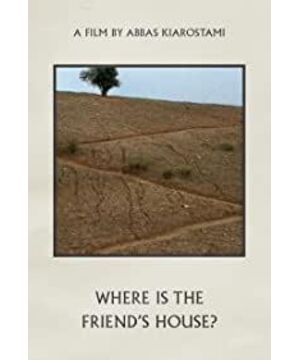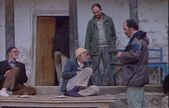The film tells a very heavy social reality in a witty way. In the cheerful details, I can't help laughing, but in the face of the cruel reality, I can really feel the repressed helplessness and even anger.
The light and shadow techniques and the rhythm of the soundtrack throughout the film are all applauded.
The casting is really awesome. The figure of the little boy sitting on the table doing his homework, that kind of innocence and beauty, like a little angel.
It can be seen from the various reasons given by the children for not completing their homework, as well as the various figures of children scattered and flashed in the clips of the film, that the children have already undertaken prematurely beyond what their age can bear. Everyone, each child becomes an important part of their respective family's labor force, and like adults, engages in the manual work that adults arbitrarily assign to them.
On the surface, the roles played by teachers and mothers are supervising children to learn, but what they actually do is putting the cart before the horse. The teacher doesn't listen to the children's explanations at all, and just blindly asks the children to abide by the records and study hard. He has nothing to do with it, or he may not realize that the education method of the whole society is demanding from the children, because in the teacher's concept Just like the terrifying words that grandpa said at the head of the village, "their generation grew up like this, if there is no mistake, their father will find an excuse to finish the two-week beating. The goal". It is true that they are victims of this style of education, and as adults they become defenders of this style of education.
The character of women in this film is also evident. The complicated housework, the responsibilities of childbirth, and the indifference of men make them seem to have lost the tenderness and kindness of motherhood. In their eyes, children have also become tools at their disposal. Obedience and work are their basic requirements for children. . Only in the dinner and reassuring words that his mother specially left for Amer after he returned home, can we vaguely feel the tenderness and consideration of motherhood itself. And watching closely behind this rare tender scene, it was the mother alone, braving the cold wind of the night, picking up the clothes in the courtyard, and the cold wind blowing recklessly from their seemingly plump bodies. And where is the father who just dialed the radio in the room just now?
The movie mentions the metaphor of the door many times, and it can be clearly felt that the director wants to use this method to map and satirize the overall current social education situation, just like the old and new meanings represented by children and the elderly.
Through the conversation between the grandfather and the old man, the movie said a lot of information that he wanted to convey, just like the old man who was talking and worrying. In fact, he used an objective point of view to calmly state the reality, while expressing dissatisfaction and disappointment. At the same time, it may be that they are full of care and expectations for the society and the country.
View more about Where Is the Friend's House? reviews








